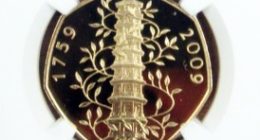
Mozilla Corp.’s Firefox internet desktop browser is offering users a limited-time approach to color themes, updating a relatively small aspect of the user experience in an effort to make users feel more attached.
An experimental Firefox feature called Colorways provides six palettes, from an orange hue called Abstract to a purple look called Graffiti, that can be set to lighter, neutral and darker shading. Users who choose one can keep it on their browsers indefinitely, but Firefox plans to retire the current palettes in about two months.
Firefox plans to introduce different palettes if user adoption of the initial colors is sufficiently high. The new hues too are likely to be available for only a limited time.
Personalization for browsers has become more valuable as people continue to work from home and have fewer ways to express themselves at work, said Mikal Lewis, senior director of Firefox product management at Mozilla.
The limited lifespan of the Colorways is a nod to the seasonality seen in fashion collections or in sneaker culture, added Mr. Lewis, whose early career includes nearly four years at retailer Nordstrom.
“We’re not really thinking about the perfect color,” Mr. Lewis said, but about changing options that may resonate for users at different times.
Colorways are an expansion of Firefox’s redesign that rolled out in June, which sought to simplify the browser by removing features that had accumulated over the years and cluttered up the experience. It also prompted Firefox users for the first time to pick browser themes, from three that it designed and that do not have an expiration date.
Apple Inc. and Microsoft Corp. have also been updating their browsers in recent months, aiming in part to introduce more consistency among their desktop and mobile products.
It is unclear how much small touches like Colorways can affect browser companies’ competition for market share.
Consumers see the browser essentially as a way to get something done, not necessarily the same sort of venue for personalization as a smartphone’s wallpaper, for example, said Carolina Milanesi, president and principal analyst at Creative Strategies Inc., a tech consulting firm.
“The browser is a utility for most people—it is a door to get somewhere else,” Ms. Milanesi said.
Write to Ann-Marie Alcántara at [email protected]
Copyright ©2021 Dow Jones & Company, Inc. All Rights Reserved. 87990cbe856818d5eddac44c7b1cdeb8








